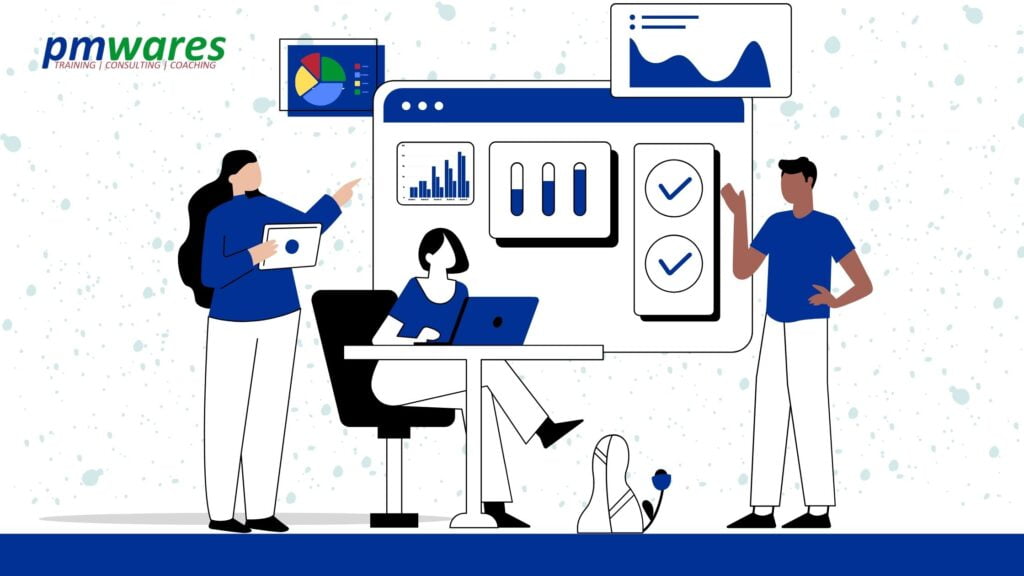Data Driven Project Management

How to use data analysis in project management to track success and achieve project objectives
Every project, whether successful or not, teaches project managers and the entire project team valuable lessons for making the right decisions in the future. This makes it critical to understand what worked well and what did not in previous projects and to apply that knowledge to create a better course for your next project. We cannot deny the importance of senior project leaders’ experience and judgment, but we also cannot ignore the data. They can reveal hidden patterns that we frequently overlook. In fact, employing both experience and data-driven methods in our organization can benefit us.
As a result, it becomes a valuable tool for any project manager, allowing them to see the big picture of project performance. Before we get into how to make your project management process more data-driven, let’s first understand the importance of data in project management.
Improved Decision Making:
There was a time when the success or failure of a large project was highly dependent on people’s gut feelings or opinions. Now that data is available, it is easier to predict the future effects of any activity we perform in the organization. There are multiple quantified measurements that can help us not only make more accurate predictions but also eliminate biases from the decision-making process. This leads to better choices and resource allocation, which improves the outcomes of our projects.
Better Insights
Data collected throughout the project lifecycle can provide you a lot of information about the project’s strengths and weaknesses, as well as areas for improvement. Historical data analysis and comparisons can help you as a project manager in improving project processes. This leads to more informed decisions in future projects. To schedule and track the progress of all project tasks, you can use tools like Microsoft Project to generate various data-driven reports. To learn more about this effective project management tool, check out our MS Project training Program.
More Transparency:
Data analytics in project management also provides transparency by giving a clear picture to every stakeholder about the project performance. This builds trust and motivation both within the team, as everyone can see how their actions are contributing towards the overall success of the project.
Here is a simple process of using data driven approaches for project managers:
Define Clear Project Objectives and KPIs:
To begin, you must clearly define your project’s objectives, which should include both long-term and short-term goals. Identify the key performance indicators that you think are most important for the project success. After you have identified the KPIs, keep a close eye on them. It is also important that your KPIs are S.M.A.R.T (Specific, Measurable, Achievable, Relevant, and Time-bound) and match with your project goals.
Select Data Sources:
Determine the best data sources for your analysis. In project management, data for analysis can come from various sources. You can collect data from your project timelines or task completion records. Even team communication can sometimes provide you with useful data to work with. Determine how you will track the data after you have identified the data sources. Although you can begin with simple spreadsheets and checklists, using a dedicated project management software can make your job ten times easier. You can learn about one of the most popular project management tool here.
Analyze and Visualize Data:
Once you have collected the data by using ways I have mentioned above, you can begin analyzing it using techniques such as trend analysis, comparisons, and statistical tests to get some findings and identify potential issues. I would recommend using visualization tools such as charts, graphs, and dashboards to make these insights even more clear and easy to understand for every team member. This will simply improve overall usability.
Monitor and Act:
Analyzing data is only the first step; you must also regularly monitor your KPIs and performance metrics because if there is a difference between your actual and expected performance, you can quickly fill the gaps by taking the right actions.
Focus on Actionable Insights:
We have completed the entire process with the goal of gaining insights but how you apply these insights is the most important aspect of the entire process. Don’t just collect data but also make sure you use the insights you gain to improve your projects. Along with qualitative data, use qualitative data such as team feedback or customer satisfaction surveys, and make sure your data is presented clearly.
Conclusion
We covered the entire process in this blog, from finding the data collection source to utilizing the data insights. We can say that using data-driven methods is a very effective way to make better decisions. We cannot deny that project management is rapidly changing, and if organizations want to keep up, they must learn how to use data-driven methods and analytics in project management. Organizations can succeed in a competitive environment and deliver high-quality projects by implementing these simple but effective practices in their project teams. You can also check out our PMP Certification Training Program which will not only prepare you for the PMP certification exam but will help you gain more valuable insights about effective and data driven decision making in project management with the help of real life examples and case studies essential for project managers for a better performance and overall a guarantee of project success.
Do you think data driven methodologies are more effective in promoting and measuring the project success as compared to traditional methods? Please let us know your thoughts in the comment section.